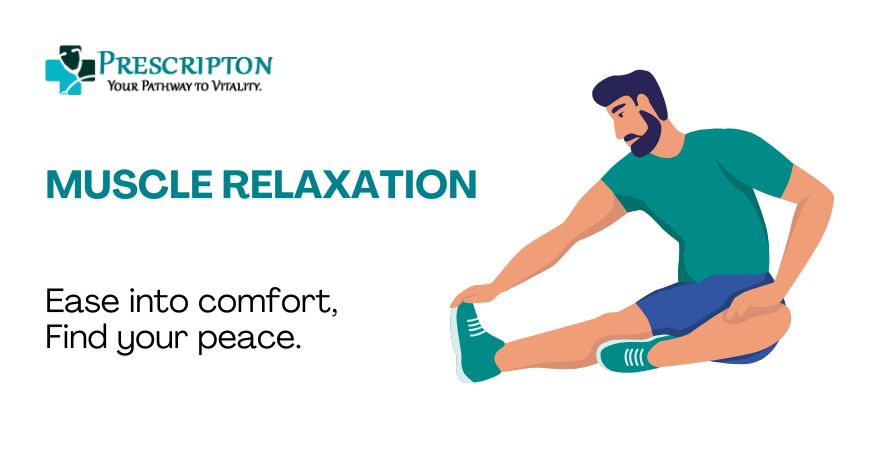
Muscle Relaxation Techniques for Instant Relief
Muscle tension is a common issue that can arise from stress, physical exertion, poor posture, or even anxiety. This tension can lead to discomfort, pain, and reduced mobility. Fortunately, there are various muscle relaxation techniques that can provide instant relief. In this blog post, we’ll explore 10 effective methods to help you relax your muscles and ease tension.
1. Deep Breathing
Deep breathing is a simple yet powerful technique for relaxing muscles. It works by activating the parasympathetic nervous system, which helps calm the body. Here’s how to do it:
- Find a comfortable position, either sitting or lying down.
- Inhale deeply through your nose, allowing your diaphragm to expand.
- Exhale slowly through your mouth, letting out all the air.
- Repeat this for 5-10 minutes, focusing on your breathing.
2. Progressive Muscle Relaxation (PMR)
PMR involves tensing and then relaxing different muscle groups in a specific order. This technique helps you become more aware of muscle tension and teaches you how to release it. Here’s a basic guide:
- Start from your toes and work your way up to your head.
- Tense a muscle group (like your toes) for 5-10 seconds, then relax it completely.
- Move to the next muscle group, tensing and then relaxing.
- Continue this process through your entire body.
3. Stretching
Stretching helps release tension and improve flexibility. Incorporate stretching into your daily routine, focusing on areas where you often experience tension. Consider these stretches:
- Neck Stretch: Gently tilt your head to each side, holding for 10-15 seconds.
- Shoulder Stretch: Bring one arm across your chest and gently press with your other hand.
- Lower Back Stretch: Lie on your back, bring your knees to your chest, and hold.
4. Yoga
Yoga combines stretching, deep breathing, and mindfulness, making it an excellent technique for muscle relaxation. There are many yoga poses designed to relieve tension, such as:
- Child’s Pose: Kneel on the floor, sit back on your heels, and stretch your arms forward.
- Cat-Cow Pose: Alternate between arching your back and rounding it.
- Downward Dog: Create an inverted “V” shape with your body, stretching your legs and back.
5. Massage
Massage therapy can be highly effective for relaxing muscles and relieving tension. A professional massage therapist can target specific muscle groups and use various techniques to release knots and tightness. If you can’t visit a therapist, consider using a foam roller or massage ball to work on tense areas at home.
6. Warm Compresses
Applying heat to tense muscles can help increase blood flow and relax the tissue. You can use a warm towel, heating pad, or hot water bottle. Place the compress on the affected area for 10-20 minutes, and repeat as needed.
7. Cold Compresses
Cold compresses can reduce inflammation and numb pain. If your muscle tension is due to an injury or swelling, a cold compress might be more suitable than heat. Wrap ice in a towel and apply it to the area for 10-15 minutes, with breaks in between.
8. Aromatherapy
Certain scents, such as lavender, chamomile, and eucalyptus, have calming properties that can help relax muscles. You can use essential oils in a diffuser, add a few drops to a warm bath, or mix them with a carrier oil for a relaxing massage.
9. Visualization and Guided Imagery
Visualization involves imagining a peaceful scene or setting while focusing on relaxing your muscles. This technique helps divert your attention from stress and can be combined with deep breathing for greater effect. To practice visualization:
- Close your eyes and imagine a peaceful location, such as a beach or forest.
- Focus on the details, including sounds, smells, and sensations.
- Allow your muscles to relax as you immerse yourself in the visualization.
10. Mindfulness Meditation
Mindfulness meditation involves focusing on the present moment and accepting it without judgment. This technique can help reduce stress and tension. Here’s how to practice mindfulness meditation:
- Find a quiet place to sit or lie down.
- Close your eyes and focus on your breathing.
- If your mind wanders, gently bring it back to your breath or another focal point, such as a word or phrase.
- Practice for 5-10 minutes, gradually increasing the duration as you become more comfortable.
Conclusion
Muscle relaxation is essential for reducing stress, preventing injury, and improving overall well-being. These 10 techniques offer various approaches to help you find relief. Experiment with different methods to discover what works best for you, and consider incorporating several techniques into your daily routine for maximum benefit. If muscle tension persists or becomes chronic, consult with a healthcare professional to determine if further treatment is needed.
